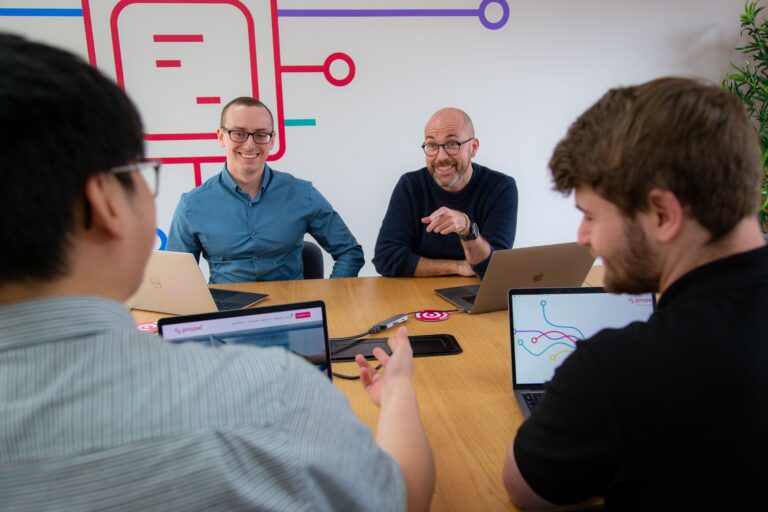In today’s rapidly changing business landscape, the importance of diversity, equality, and inclusion (DEI) cannot be overstated. While many organisations have recognised the significance of these principles, there are still those that have failed to embrace diversity genuinely and have instead resorted to “diversity dishonesty” which is a form of lip service.
These organisations lack the commitment to foster a truly inclusive and diverse work environment or have a bare minimum level of commitment to mandatory legal directives and quotas. Unfortunately, this approach has negatively affected both the organisation and individuals within them.
However, the advent of a new era of work demands a radical change in the employer/employee relationship and a realisation that diversity of thought and background, as well as a workforce representing the customer base, are vital elements for future competitiveness.
Gone are the days of diversity dishonesty, tokenism and box-ticking. Businesses who focus on the bigger picture beyond profitability or performance and harness the additonal opportunities that come with diversity and inclusion. For your organisation to benefit from its DEI effort, there is a need to have a comprehensive diverse and inclusive strategy.
This strategy should be evidence-based and metrics-driven outcomes rather than promises, processes and procedures. Collecting the metrics and surveys is a good starting point and indicates a level of commitment, and you can build on that to consolidate the impact.
Businesses should also go beyond short-term wins and aim for long-term opportunities such as reaching out to underrepresented communities and having a footprint for future opportunities in this area. You want your business to be known as a brand that supports diversity and inclusion and makes a significant impact in the community where it operates.
Brand loyalty among LGBT is extremely high, and research by Community Marketing Inc. & Harris Interactive states that 70% of LGBT adults would pay a premium for a product from a company that supports the LGBT community. Another research indicates that 69% of Black consumers are more likely to proactively seek out a brand with advertising that positively reflects their race/ethnicity. This shows that building a supportive brand can be quite impactful in the long run and help businesses gain loyal customers and this extends to employees.
Businesses can also consider apprentice initiatives, female leadership initiatives and programs with the result of getting women into secured leadership roles. This program will ensure that all areas of an employee’s journey and life cycle are positively impacted. Avoid programs with no long term goal or outcome is in place. The goal should include leadership programs that have a clear route to progression and that will eventually lead to a job guarantee for women, black and ethnic minorities, as well as other underrepresented groups.
The programs should support and motivate positive progress towards more diversity in the boardroom and throughout the organisation while promoting corporate pride and commitment to supporting LGBTQ+ communities.
While progress has been made, there is still work to be done to achieve genuine representation and inclusion. The pointers above will ensure that you keep progressing with your efforts as an inclusive business.
The Evolution of Diversity, Equality, and Inclusion (DEI)
Diversity dishonesty, tokenism and superficial support for DEI are demaging. Organisations need to move beyond surface-level efforts and truly understand the complexity and nuance of diversity.
DEI goes beyond the basic binary issues of race and gender. It encompasses various dimensions such as ethnicity, age, religion, disability, and socio-economic background.
A recent study by McKinsey found that companies with ethnically diverse executive teams are 36% more likely to achieve above-average profitability.
Moreover, equality extends beyond pay and opportunity. It encompasses fair treatment, respect, and a sense of belonging. A cursory survey that glances across the organisation to gauge DEI is futile. Instead, organisations must adopt a comprehensive DEI strategy that addresses the multifaceted aspects of diversity and ensures genuine equality.
Company leaders are responsible for ensuring that companies create an inclusive and diverse workplace culture. However, it can be easy to fall into the trap of tokenism – the practice of including only a few people from underrepresented groups in an organisation to give the appearance of diversity.
Diversity dishonesty and tokenism can have serious consequences for both the individuals involved and the company as a whole. Moving forward, there are steps you can take to do more and create a truly inclusive work environment. These include:
Recognising the Problem
The first step in eliminating diversity dishonesty and tokenism is recognising that it exists. Tokenism can take many forms, such as hiring practices that prioritise diversity over qualifications or selecting a few people from underrepresented groups to serve on a committee to give the appearance of inclusivity. Take the time to examine your policies and practices to see if they are promoting tokenism. Then review them and make them more inclusive to bring about the change needed.
Focusing on Equity
Instead of focusing solely on diversity, focus on equity. Equity means treating everyone fairly and creating an environment where everyone has equal opportunities to succeed. This means examining your current practices to see if they are creating barriers for certain groups and making changes to eliminate those barriers.
Use ongoing training to provide education on topics such as unconscious bias, privilege, and allyship to foster a shared language and understanding among employees.
Examine areas such as recruitment, promotions, compensation, and performance evaluations to identify and eliminate any biases.
Implement policies that support fair and equal opportunities for all employees, regardless of their backgrounds, and create a level playing field.
Ensuring Representation Across All Levels
To eliminate tokenism, it’s important to ensure that underrepresented groups are represented at all levels of the organisation, not just in entry-level positions. This means creating opportunities for career advancement and professional development for all employees, regardless of their background.
For example, you can create programs that will help people who are under-represented and women gain leadership positions at the end of the program.
You can also have a clear pathway for female apprentices where they have a guaranteed role at the end and not just another time wasted on learning towards a position they would not attain.
Another way is to recruit diverse panellists during interviews which will bring a new dimension to your recruitment process for a more diverse workforce.
Creating Safe Space for Open Communication
Creating a safe space for open communication means allowing employees to share their thoughts and ideas without fear of retaliation.
Encourage open dialogue by promoting active listening, empathy, and understanding.
Emphasize the importance of confidentiality and ensure that conversations and discussions are conducted in a non-judgmental and supportive manner.
Encourage employees to speak up about their experiences and opinions, and take action to address any issues that are raised. You can also create forums for communication that allows everyone to express their views freely.
Avoiding Stereotyping
Stereotyping is a form of bias that can lead to tokenism. Avoid making assumptions about individuals based on their race, gender, or other characteristics. Instead, focus on getting to know each employee as an individual with unique skills and experiences.
Establish, develop and enforce comprehensive policies that explicitly prohibit discrimination, harassment, and stereotyping in the workplace.
Evaluate and alter your internal processes susceptible to prejudices stemming from stereotypes, such as job application processes, the recruitment process and promotion decisions.
Measuring Progress
Finally, measuring progress is important to ensure that your efforts to eliminate tokenism are working. Collect data on diversity and inclusion within your organisation, and use that data to make informed decisions about future policies and practices. Remember that you want to create an impact based on the data collected and also keep improving your progress at all levels.
Develop a DEI scorecard based on the goals you have set to achieve
Incorporate softer nonobvious measures such as diverse employee retention, number of active allies, the number of paid maternity leave approved, and other metrics unrelated to hiring or promotion to track progress.
Removing diversity dishonesty and tokenism from your company’s culture is a long-term process but it’s worth the effort. By focusing on equity and creating opportunities for all employees, you will be well on the way to improving.
The Need for a Holistic DEI Strategy
DEI should be approached as an organisation-wide initiative rather than a mere checklist of tasks. It requires top-down commitment from senior executives in HR to create a culture that values and embraces diversity at every level.
A Deloitte survey revealed that 69% of executives believe that DEI is important for their organisation’s success, but only a few believe they have an excellent understanding of DEI issues.
Organisations should adopt evidence-based and metrics-driven approaches to achieve a holistic DEI strategy. This means collecting data, measuring outcomes, and holding leaders accountable for progress.
According to research by Gartner, organisations that measure DEI, create accountability, and embed inclusion into talent decisions and processes report up to 20% more organisational inclusion than those that do not. By measuring outcomes, organisations can identify areas of improvement, track progress, and make informed decisions.
Measuring the impact of diversity, equity, and inclusion (DEI) initiatives is crucial for organisations striving to create inclusive and equitable environments. To effectively gauge the impact several indices can be considered.
Firstly, representation indices examine the diversity within an organisation, such as the percentage of women, people of colour, and individuals from underrepresented groups in leadership positions.
Secondly, retention indices measure the rate at which diverse employees stay with the company over time, indicating the inclusivity of the workplace.
Thirdly, promotion indices analyse the advancement opportunities available to diverse employees, ensuring fair and equal career progression. Additionally, engagement indices evaluate employee satisfaction and commitment, while satisfaction surveys capture feedback on the inclusivity of company culture.
Finally, market indices assess customer satisfaction, loyalty, and brand reputation in relation to DEI efforts. To measure the impact of DEI comprehensively, organisations should follow a series of steps, including establishing clear objectives, collecting relevant data, analysing findings, identifying areas for improvement, implementing changes, and monitoring progress over time.
Leveraging Diversity as a Catalyst for Organizational Success
Embracing diversity brings numerous advantages to organisations. A diverse workforce fosters a wide range of mindsets and perspectives, which leads to innovative problem-solving and better decision-making.
Research by Boston Consulting Group indicates that companies with diverse management teams have 19% higher revenue due to innovation. Furthermore, organisations with diverse talent pools are better equipped to understand and meet the needs of their diverse customer base.
Promoting diversity in the boardroom is crucial for organisational success. A study conducted by Credit Suisse found that companies with at least one woman on the board outperformed all-male boards by 26% in terms of stock performance over six years.
Similarly, organisations that prioritise LGBTQ+ inclusion demonstrate higher levels of employee engagement and retention, leading to increased productivity and overall performance.
Overcoming Challenges and Driving Genuine Representation and Inclusion
While progress has been made in advancing diversity and inclusion, there are still quite several challenges to overcome. It is essential to acknowledge the progress made while recognizing the work that remains. To address this, organisations must identify and remove barriers to diversity and inclusion, such as unconscious bias in hiring and promotion processes.
To drive genuine representation and inclusion, organisations should implement strategies that foster an inclusive culture. Here are practical strategies that can pave the way for creating an inclusive business.
Host senior leadership hot seats – This is a great opportunity to get genuine connections and authentic relationships. You can also invite diverse audiences to speaking engagements and challenge traditional line-ups. This can help to create more inclusive environments that embrace diverse perspectives and experiences.
Website representation is another critical aspect. Featuring genuine testimonials from diverse clients and using inclusive language and imagery on websites helps create an inclusive brand image. Authenticity is key, as superficial attempts at diversity representation are easily discerned. This has to be genuine, not just a misplaced photograph to check off the box for diversity.
Community – Engage in different diverse community groups via social media. You can reach out to those communities and build brand awareness and an image of what you do and how you do it. Reach out with the intent to support and not to take. This is a fantastic opportunity to understand, support, and learn how you can add value to different diverse communities.
Reverse mentoring – Set up a coffee date virtual or face-to-face to meet with someone who has differences from you and get to know them better. Find out what their challenges are and look for ways to progress forward. Collaborate, invest, and do not judge just embrace them for who they are not what they are!
Conferences, round tables and day workshops – Invite diverse audiences and if you notice that your speakers are not diverse, challenge why not, and ensure that there is equal representation.
Accessibility – Set up network events or courses that cater for all audiences and abilities. Think about things like accessibility for disabilities, times for those with children or maybe those who may be fasting, preparation for buddies, or extra support groups for those who may need extra support. A welcoming atmosphere for all should be the goal here so no one feels left out.
Make sure your organization provides a safe and inclusive environment where people feel that they can really be heard. Take the action needed to make an impact don’t just get the information and do nothing with it. Also, use diverse language in all of your communications to become a well-rounded and diverse business.
When we embrace diversity and inclusion, we fully understand that we all have our rainbows.
In the new era of work, genuine diversity and inclusion are essential for organisational success. It is time to move beyond tokenism and embrace a comprehensive DEI strategy that addresses the complexity and nuance of diversity.
By leveraging diversity as a catalyst, organisations can foster innovation, improve decision-making, and better serve their diverse customer base.









